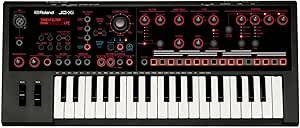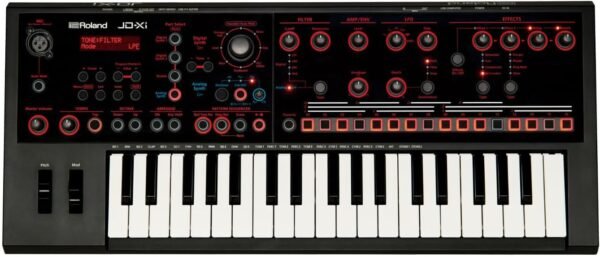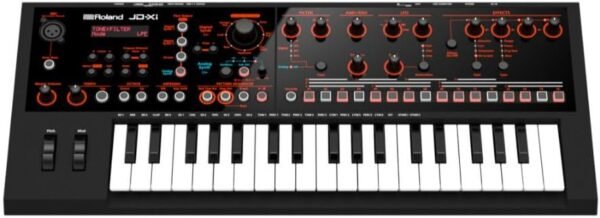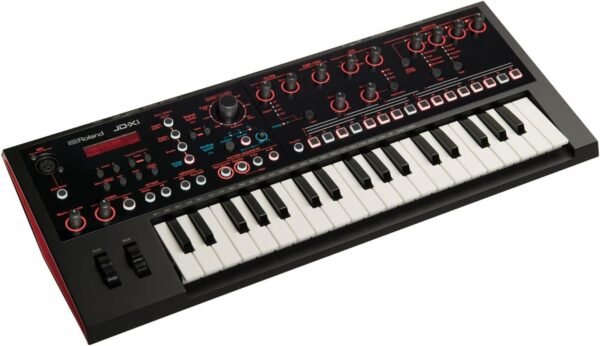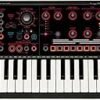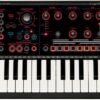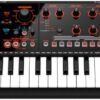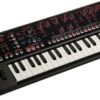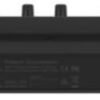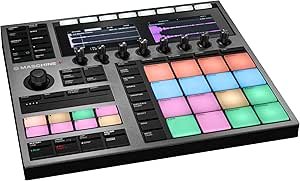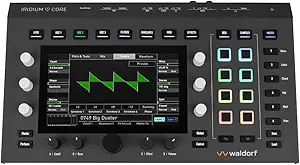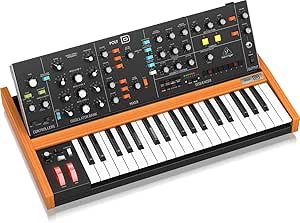Roland JD-XI 37-Key Synthesizer Review Exploring Analog and Digital Fusion
Roland JD-XI 37-Key Synthesizer Review Exploring Analog and Digital Fusion
- The compact design makes it easy to transport and set up for gigs or practice.
- Its built-in vocoder adds versatility, letting you create unique vocal effects effortlessly.
- The analog and digital crossover offers a perfect blend of warm analog tones and modern digital sounds.
- Intuitive controls simplify sound programming, even for beginners.
- The high-quality effects section enhances creativity, providing depth and polish to your music.
As an Amazon Associate I earn from qualifying purchases.
Description
A Compact Powerhouse: Roland JD-XI 37-Key Interactive Analog/Digital Crossover Synthesizer
As someone who spends countless hours testing and experimenting with musical gear, the Roland JD-XI 37-Key Interactive Analog/Digital Crossover Synthesizer immediately caught my attention. This sleek, compact synthesizer is a fascinating hybrid of analog warmth and digital versatility, packing an incredible amount of functionality into such a small frame. Whether you’re a seasoned musician or a curious beginner, this instrument offers plenty to explore. My experience with it has been largely positive, though there are a few quirks worth mentioning.
Design and Build Quality
The first thing I noticed was how compact and lightweight the synthesizer is. The 37 mini-keys struck me as a bit cramped initially, but they still feel responsive and well-suited for fast, dynamic playing. The overall build quality is solid, with a rugged plastic chassis that feels durable enough for gigs or studio use. The sleek black finish and illuminated controls give it a modern, professional look that fits right into any setup.
What really stood out to me were the intuitive controls. The layout makes it easy to access the oscillators, filters, and effects, even for someone like me who prefers knobs and sliders over menus. The small screen might take some getting used to, but it displays enough information to keep you on track without being overwhelming.
Sound Performance: Analog Warmth Meets Digital Precision
The sound engine is where this synthesizer truly excels. I found the analog section to be surprisingly rich and warm, offering deep basses and lush leads that feel alive. Whether I was playing a funky bassline or a soaring melody, the analog sound had a presence that made it stand out. The filter section added even more character, allowing for smooth sweeps and aggressive resonance when needed.
On the digital side, the variety of crystal-clear timbres is impressive. From shimmering pads to gritty textures, the digital engine complements the analog side beautifully. The built-in vocoder was an unexpected gem—I had so much fun experimenting with vocal effects and robotic harmonies. The effects section, which includes options like delay and reverb, added even more depth and polish to the sounds.
If you’re into sound design, you’ll love how programmable this synthesizer is. I tweaked everything from oscillator waveforms to modulation settings, all without feeling bogged down by complexity. While it may not match the depth of some high-end synthesizers, I found it more than capable for creating unique sounds.
Key Benefits
- Hybrid engine combines analog and digital sounds for maximum versatility.
- Compact and portable design makes it easy to transport.
- Built-in vocoder and effects add creative possibilities.
- User-friendly controls and intuitive layout.
- Great for both beginners and experienced musicians.
Areas for Improvement
One downside I noticed was the lack of full-sized keys, which might be a dealbreaker for pianists or those with larger hands. Additionally, the polyphony on the analog side is limited to one voice, which means you can’t play chords using analog sounds alone.
Another minor gripe was the small display screen. While functional, it felt a bit outdated compared to the high-resolution screens found on some competing products. Navigating menus can be a bit tedious, especially during live performances where time is of the essence.
- Limited analog polyphony restricts chordal possibilities.
- Mini-keys may feel cramped for some players.
- Small screen makes menu navigation less intuitive.
Peer Products
In terms of competitors, I compared this synthesizer with the Korg Minilogue and the Novation Bass Station II. Both are excellent options, but they cater to slightly different needs. The Minilogue offers four-voice polyphony in its analog engine, which is a big plus for chordal work. However, it lacks the digital engine and vocoder capabilities of the JD-XI.
The Bass Station II, on the other hand, focuses more on bass-heavy analog sounds. Its powerful filters and modulation options are stellar, but it doesn’t offer the hybrid flexibility that makes the JD-XI unique. If you’re looking for a balance of analog richness and digital versatility, the JD-XI stands out as a more well-rounded choice.
Price Performance
When considering the overall value for money, I think this synthesizer is a strong contender. While it’s not the cheapest option on the market, the combination of analog and digital sound engines, compact portability, and creative features like the vocoder make it a worthwhile investment. It’s especially appealing to musicians who want a versatile tool for both live performances and studio work. If you value hybrid functionality and ease of use, this synthesizer delivers plenty of bang for your buck.
In my opinion, the Roland JD-XI 37-Key Interactive Analog/Digital Crossover Synthesizer punches well above its weight class. Its mix of analog warmth, digital precision, and creative tools make it an excellent choice for anyone looking to explore new sonic possibilities. While it has a few minor shortcomings, the overall experience is nothing short of inspiring.
